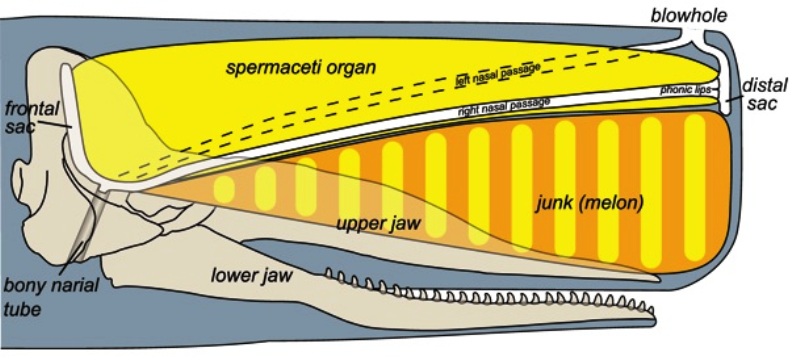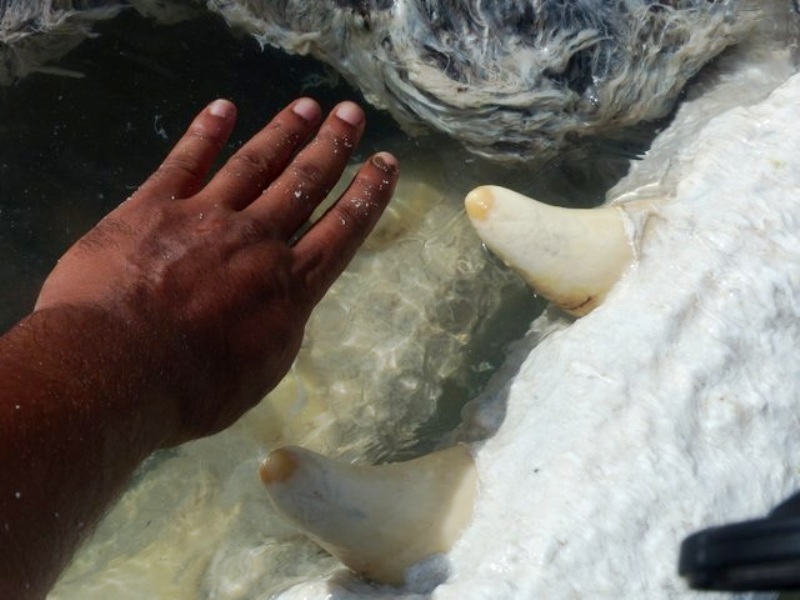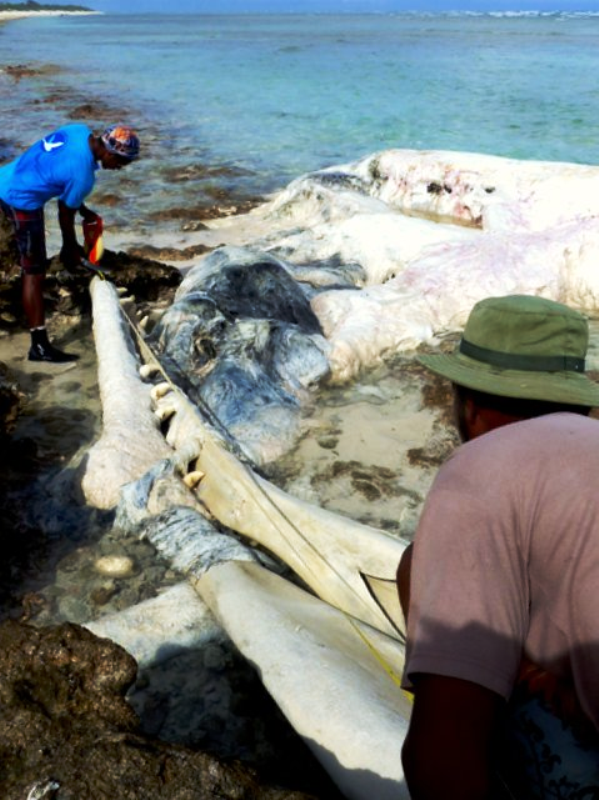Jaw of enormous ‘cachalot’ washed up on South Island, Farquhar |25 April 2016
Since September 2014, the Island Conservation Society, has set up a conservation centre on Farquhar Atoll to assess, monitor and protect the ecosystem under the Outer Island Project funded by the Global Environment Fund and United Nations Development Programme.
On December 4, 2015, during the routine turtle monitoring on South Island, our assistant conservation officer, Richard, found the remains of a the head of a large cachalot or sperm whale. The upper jaw of the animal was washed up on the beach, while the lower jaw was at the water’s edge, surrounded by a mass of whitish flesh that we assumed was part of the body or the head.
The name ‘cachalot’ is thought to derive from the archaic French for ‘tooth’ or ‘big teeth’ and they are the largest toothed whales on the planet. The teeth are only located on the lower jaw and fit into sockets in the roof of the mouth. Scientists believe teeth aren't all that important in feeding. Most of the items recovered from cachalot stomachs are not even chewed, but swallowed whole. One theory is that the teeth are used in aggression between males and indeed mature males often show scars which are probably caused by the teeth.
The jaw of a cachalot corresponds to 20–25 percent of the total body. We measured a length of 5m for the lower jaw, meaning the whale was 20-25m, one of the largest ever recorded. The teeth were also an impressive size from 15 to 27cm. We concluded the animal was a large male since females rarely exceed 12m.
The cachalot has a very large, block-shaped head. From the picture of the upper jaw, we can see the blowhole situated on the left side of the head. This gives rise to a distinctive bushy, forward-angled spray which helps to identify the species when seen at sea. The ‘spermaceti’, originally mistakenly identified as the whales' semen, is a semi-liquid, oily substance within the whale's head, for which whales were once hunted and slaughtered in large numbers.




Aurelié Duhec




